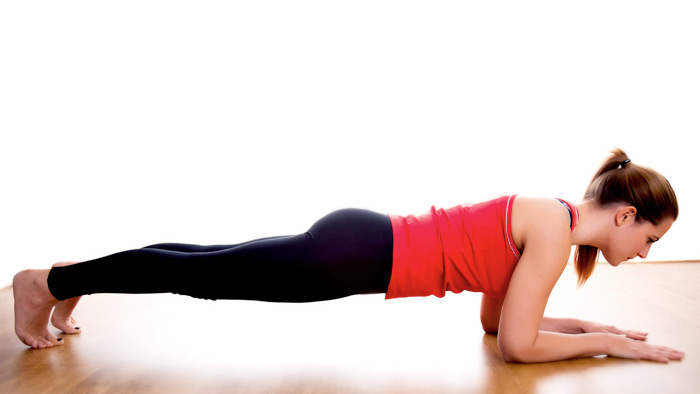If you are a female endurance athlete and don’t incorporate any strength training into your training regimen, I am hoping by the end of this article you will. As a coach, I still hear women not wanting to strength train for fear of getting bulky. Strength training does not always mean heavy lifting (bodyweight exercises are fantastic), and even if you do lift heavy, if you are eating properly you’ll see great changes in your body, not bulk. You’ll reap the following benefits if a strength training program is implemented properly.
Injury Prevention
This is huge, and if anything, should be the biggest driver to strength train. Whether you are a cyclist, swimmer, runner, or triathlete, you do the same motion over and over, which can cause issues if the muscles stabilizing the joints are weak. The stronger your core is (shoulders to hips) the longer you can maintain good form and keep pace at the end of a race. The stronger you are in all planes of motion, the less likely you are to get injured.
Increase Muscle Mass for Improved Body Composition
Having more muscle mass increases your metabolism for a given body weight. And yes, depending on your starting point, muscles may have to get a little bigger before they can get stronger. But you won’t get bulky muscle mass, as you’re probably swimming, biking, or running at least 2 to 4 times the amount of time you are doing strength work. I will admit, your shirts and jeans may fit a little differently, but you’ll like what you see in the mirror. Your daily nutrition strategies play a role in this, too. Strength training can also improve bone density, which can help prevent osteoporosis.
Improve Power Generation
This will help you race faster! If you have trouble on the climbs, or keeping steady on the flats, strength training can help. From personal experience, I incorporated a structured functional and heavy lifting program and saw my fast-twitch muscle performance improve on the bike with very little cycling. I also saw my maximum power on 10 second sprints increase by 20 percent. So if you say, “I don’t sprint,” that improved power generation will help you on a course with those punchy little climbs. To see good gains in this, exercises geared toward power generation, such as Olympic lifts with weights or plyometric exercises like box jumps, are needed.
It can be a bit overwhelming to know where to start if you are new to strength training, but there are a lot of resources out there like books, online, or from personal trainers. The key is to find the option that fits your schedule and allows you to be consistent. Some of these options are:
Hire a personal trainer who works with endurance athletes, preferably a Certified Strength and Conditioning Coach (CSCS.). A good one is going to assess your individual needs and create a program for your best benefit.
Find a group class. A lot of gyms these days are doing more functional, or movement, strength classes that can be beneficial to endurance athletes. The good ones will have you working multiple joints and muscle groups in all planes of motion.
Strength train at home. I have a lot of my athletes incorporate a program from a book called You Are Your Own Gym by Mark Lauren. He has several bodyweight programs out there that are both time efficient and great workouts.
A lot of strength training can be rehab (aka prehab) exercises. The exercises that bring you back from injury can often be the best to prevent injury. If you have limited training time, these are the ones to do. It’s much better to shorten a swim, bike, or run workout by 5 to 10 minutes to get in some strength work than to end up taking days, weeks, or months off due to an injury.
Exercises You Can do at Home:
Do 1-3 sets of 8-12 reps of the exercises listed below unless otherwise noted.
Hip Strength – Cyclists and runners should pay special attention to these.
- Clam shells
- Lateral leg raises
- Forward and reverse lunges: 5-10 on each leg
- Side lunge: 5-10 on each leg
- Donkey kicks
- Fire hydrants
Shoulder/back strength – Triathletes need to work the rotator cuff and scapular stabilizers. Even for cyclists and runners, it is helpful to hold proper body position.
- Stretch cord interval and external rotation
- Stretch cord rows
- Reverse pull-ups
- Push-ups (instead of going to your knees, elevate your hands (for example on a step) if you need to make them easier)
General Core – Good for all endurance athletes to improve.
- Prone plank: 20 seconds -1 minute
- Side plank: 20 seconds -1 minute
- Glute bridge: 20 seconds -1 minute
- Russian twists: 10-20 reps
- Supermans or Swimmers: 10-20 reps
Start with 5-10 minutes of bodyweight exercises three times as week and see if you notice a difference. If you can stay injury free, get a little leaner and stronger, chances are you’ll race faster!


